Magic Mushroom Substrate Kit Large 1200 ml
$35.00
Buy Mushroom Substrate Kit Large 1200 ml online
1200 cc of sterile substrate for mushroom culture are included in the mushroom substrate large kit. The Cubensis mushroom is the target audience for this substrate package. You can cultivate any strain you choose by adding the spores. For improved spore development, we advise using Liquid Culture, which is included in the kit.
What Are Magic Mushroom Substrates?
Firstly, the materials use to grow magic mushrooms, particularly those that contain the hallucinogenic substance psilocybin, are known as magic mushroom substrates. Then, for the mycelium, the fungus’s vegetative portion, to develop and eventually yield mushrooms, the substrate offers the conditions and nutrition it needs, buy magic mushroom substratemagic mushroom substrate online here.
Common Types of magic mushroom substrate
- Grain-Based Substrates:
- Rye Grain: A popular choice due to its nutrient density and ability to retain moisture. However, It is often used in jars for small-scale cultivation.
- Wheat and Oats: These grains are also effective and can be used similarly to rye.
- Bulk Substrates:
- Straw: Often used in larger-scale grows, straw must be pasteurized to eliminate competing organisms. It provides a good structure for mycelium to colonize.
- Manure: Horse or cow manure is rich in nutrients and can be mixed with straw or other materials to create a fertile substrate. Then, It also requires pasteurization to prevent contamination.
- Wood-Based Substrates:
- Hardwood Sawdust: This substrate is suitable for certain types of mushrooms and can be enrich with bran to boost nutrient content.
- Coco Coir:
- Derived from coconut husks, coco coir is often use in combination with other substrates. Then, It retains moisture well and provides a good structure for mycelium growth.
Preparing the magic mushroom substrate
Again, the preparation of the substrate is crucial for successful mushroom cultivation. It typically involves:
- Sterilization or Pasteurization: This process eliminates unwanted bacteria and molds that could compete with the mushroom mycelium. In addition, sterilization is often done using a pressure cooker, while pasteurization can be achieved through hot water treatment.
- Moisture Content: The substrate must have the right moisture level to support mycelium growth without becoming overly wet, which can lead to contamination.
Magic Mushroom Substrate for Microdosing
Secondly, the quality and potency of magic mushrooms can be greatly impacted by the substrate use when growing them for microdosing. Also, the following are important factors to take into account and suggestions for substrates that work well for microdosing:
1. Choosing the Right Mushroom Strain
Then, the most often utilized psilocybin mushroom strains for microdosing are Psilocybe cubensis, Psilocybe semilanceata, and Psilocybe cyanescens. Yet, because psilocybin levels vary among strains, choosing one with a reputation for steady potency is crucial for successful microdosing.
2. magic mushroom substrate Options
- Brown Rice Flour (BRF): This is a popular substrate for beginners and is often used in the PF Tek method. It is easy to prepare and provides a good nutrient base for the mycelium, leading to healthy fruiting bodies.
- Coconut Coir: Known for its excellent moisture retention and aeration properties, coconut coir can be mixed with other substrates like vermiculite or gypsum to enhance its nutrient profile. Then, this substrate is particularly effective for growing robust mushrooms.
- Rye Grain: Rye is nutrient-rich and supports vigorous mycelium growth. It requires sterilization but can yield high-quality mushrooms suitable for microdosing.
3. Preparation and Sterilization of the magic mushroom substrate
Then, to avoid contamination, the substrate must be properly prepared and sterilized. Also, grain substrates and bulk substrates, such as straw, can be pasteurize in a pressure cooker. By taking this step, you can make sure that there are no competing organisms on the substrate that could hinder your mushrooms’ growth.
4. Harvesting for Microdosing
Likewise, to maintain their efficacy, mushrooms should be carefully dried before being harvest for microdosing. You can either air-dry them in a well-ventilated, dark place or use a food dehydrator. Also, to make dosing easier, you can ground the dry mushrooms into a powder.
5. Dosing Considerations
Usually, microdosing is ingesting a sub-perceptual amount, which is approximately 5–10% of a typical psychoactive dose. This typically corresponds to between 0.1 and 0.3 grams of dry psilocybin mushrooms per dosage. Then, to get the intended effects without suffering from strong psychoactive side effects, dosage consistency is essential.
How to Prepare Magic Mushroom Substrate at Home
Thirdly, choosing the appropriate ingredients, combining them in the precise amounts, and making sure they are properly sterilized to avoid contamination are all part of making a magic mushroom substrate at home. Also, here’s a detailed tutorial to assist you properly prepare your substrate.
Step 1: Choose Your Substrate Ingredients
Meanwhile, Common substrates for magic mushrooms include:
- Brown Rice Flour (BRF): Often used in the PF Tek method.
- Coconut Coir: Provides excellent moisture retention.
- Vermiculite: Enhances aeration and moisture retention.
- Gypsum: Adds calcium and helps with pH balance.
- Manure: Nutrient-rich, often used in bulk substrates.
Step 2: Prepare the Substrate Mixture
Besides, For a Basic BRF Substrate:
- Ingredients:
- 2 parts brown rice flour
- 2 parts vermiculite
- 1 part water
- Mixing:
- In a clean bowl, combine the brown rice flour and vermiculite.
- Gradually add water while mixing until the mixture is moist but not soggy. It should hold together when squeezed
Then, For a Coconut Coir and Vermiculite Mix (CVG):
- Ingredients:
- 1 part coconut coir
- 1 part vermiculite
- 1 part water
- Optional: 5-10% gypsum
- Mixing:
- Hydrate the coconut coir by pouring boiling water over it and letting it sit until cool.
- Once cooled, mix in the vermiculite and gypsum until evenly distributed.
Step 3: Sterilization
Meanwhile, Sterilization is crucial to eliminate contaminants. Here’s how to do it:
- Jars Method:
- Fill sterilized glass jars with your substrate mixture, leaving some space at the top.
- Cover the jars with aluminum foil to prevent water from entering during sterilization.
- Place the jars in a pressure cooker and sterilize at 15 PSI for about 60-90 minutes.
- Bulk Method:
- If using a bulk substrate, pack the mixture into large plastic bags or containers.
- Steam sterilize or pasteurize the substrate by heating it to 150-185°F (65-85°C) for at least an hour.
Step 4: Cooling and Inoculation
However, once the substrate has been sterilized, let it cool fully before adding mycelium or mushroom spores. By doing this, contamination and heat shock are avoided.
Step 5: Inoculation
- Inoculation Process:
- In a clean environment, use a sterile syringe to inject spores or mycelium into the substrate.
- If using jars, inject through the lid; if using bulk bags, inject through the side.
- Sealing:
- Seal the jars or bags to maintain a sterile environment for the mycelium to colonize.
Best Magic Mushroom Substrate for Beginners
Furthermore, selecting the appropriate substrate is essential for success when beginning to grow magic mushrooms. The following are a few of the top beginner-friendly substrates:
1. Coconut Coir
Thus, beginners frequently choose coconut coir because of its accessibility and ease of usage. It offers a solid structure for mycelium growth and effectively maintains moisture. Then, high success rates with coir, either by itself or in conjunction with different substrates, have been recorded by numerous farmers.
2. Brown Rice Flour (BRF)
Brown rice flour is often used in the PF Tek method, which is a simple and effective way for beginners to grow magic mushrooms. This substrate is easy to prepare and can be sterilized in jars, making it a great starting point for new growers.
3. Rye Grain
Another great substrate for novices is rye grain. It promotes strong mycelium development and is nutrient-rich. The high yields it can produce make it worth the effort, even though sterilization calls requiring a pressure cooker.
4. Straw
Again, Straw can be used as a bulk substrate and is particularly effective when combined with other materials like manure. It requires pasteurization to eliminate contaminants but is relatively easy to work with and can yield good results.
5. Vermiculite and Peat Moss Mix
For novices, a blend of peat moss and vermiculite is also a fantastic choice. Good aeration and moisture retention are provided by this combination, both of which are necessary for the growth of mycelium. A tiny bit of lime can be added to assist bring the pH into balance.
Buy Mushroom Substrate Kit Large 1200 ml Online.
Similarly, Mushroom Substrate Kit Large | Sterile Substrate for mushroom cultivation for sale online, buy magic mushroom substrate online.
Then,the mushroom sterilise substrate can be thought as soil for a plant. This sterilise substrate needs to be inoculate with our liquid cultures obtain from spores.
Mushroom Substrate Kit contains
- Container with 1200 cc / ml sterile substrate mix
- Liquid Culture 10 ml
- Injection port
- Fruiting Bag with Filter
- Alcohol swap
- Clip
Where To Buy Mushroom Substrate Kit Large Online
Mushroom Substrate Kit Large For Sale Online | Sterile Substrate for mushroom cultivation
Thus, the mushroom sterilised substrate can be thought as soil for a plant. This sterilised substrate needs to be inoculated with our liquid cultures obtained from spores. Buy Mushroom Substrate Kit Large 1200 ml online in USA.SHOP HERE
Substrate Contains:
However, Sterilised substrate with a moisture content: 60-65%. A mixture of whole oat, vermiculite, perlite and Gypsum.
Recommeded products to use
- Spore syringe
- Spore Vial
- Face mask
- Gloves
- Lighter
- Desinfectant handgel
Storage
Although, always store your substrate kit in a clean refrigerator ! We recommend to use the substrate kit as soon as possible. The kit can be kept under refrigerated conditions for up to 6 weeks.
How To Buy Mushroom Substrate Kit Large Online
Mushroom Substrate Kit contains
How to use a magic mushroom substrate kit : Instructions
Phase 1 – Prepare the Liquid Culture
Just as, Wash your hands and clean the working area! .
- Shake the spore vial or syringe very good to make sure all spores are floating.
- Disinfect the injection site of the liquid culture and the spore vial or syringe with the alcohol swap.
- Inject 2 ml of spore solution in the Liquid culture
Certainly , shake the inoculate liquid culture vigorously once a day every day for 10 days Store the inoculate liquid culture in a place between 23-27 degrees Celsius. The liquid culture is ready when you see a cloud floating in the suspension. This is mycelium..
Therefore, your Liquid culture is ready, It is called the Master Culture, if used and stored properly you can have lots of mycelium from only a bit of spores..
Important!
- If the liquid is murky, it means there is a contamination and the culture is unusable.
- If you don’t use the liquid culture for 10 days, store it in the refrigerator
Phase 2 – Inoculation
Step 1
- Wash your hands and clean your working area
- Clean injection site of the sterilized substrate and liquid culture
Step 2
- Retract 10ml (1200 CC kit) or 10 ml (2100 CC) from the liquid culture
- Inject spore suspension, through the injection site of the kit
Step 3
- After inoculation turn and shake the box 360 degrees in all directions
- store the kit in a dark place with temperature between 23 °-27°C
Result:
After inoculation, you’ll see mycelium form. A white fungus will gradually fill the sterilize substrate. This can take up to 2-3 weeks depending on the temperature.
Phase 3 – Fruiting and Spore collection
~ Please keep in mind that fruiting mushrooms can be illegal in you country. Always check you local laws before entering this stage. ~
When the substrate is fully colonized it’s time to get the fruits growing to collect mushroom spores or mushroom tissue to continue your research or cultivation, buy magic mushroom substrate easily with discrete delivery.
Magic Mushroom Substrate Storage Tips
Furthermore,Proper storage of magic mushroom substrates is essential to maintain their quality and prevent contamination. Here are some effective tips for storing your substrates:
1. Keep It Clean and Dry
In fact, Keep your substrates dry and clean to reduce the chance of contamination. Make sure the storage space is well-ventilated and humidity-free because moisture might encourage the formation of mold.
2. Use Airtight Containers
Also,use airtight containers to shield your substrate from environmental factors and moisture. It is best to use containers with tight-fitting lids or vacuum-sealed bags. Then,mylar bags are very useful since they assist maintain the integrity of the substrate by blocking light and creating an airtight seal.
3. Store in a Cool, Dark Place
Meanwhile,store your substrates in a dark, cool place. Heat and light exposure might deteriorate the substrate’s quality and decrease its efficacy. Generally speaking, a temperature range of 15-20°C (59-68°F) is appropriate for storage.
4. Monitor Humidity Levels
If possible, use a hygrometer to monitor humidity levels in your storage area. Aim to keep humidity low to prevent mold and other contaminants from developing. If you notice high humidity, consider using desiccants to absorb excess moisture.
5. Label Your Containers
Subsequently, Indicate the type of substrate and the preparation date on your storage containers. By using older substrates first and keeping track of freshness, this method lowers the possibility of employing deteriorated materials.
6. Avoid Frequent Opening
Then, minimize the frequency of opening your storage containers. Each time you open them, you introduce the risk of airborne contaminants. Only open the containers when necessary, and do so in a clean environment.
Magic Mushroom Substrate Contamination Prevention
Furthermore, Preventing contamination is crucial for successful magic mushroom cultivation, as various unwanted organisms can compromise your grow. Here are effective strategies to minimize the risk of contamination in your substrate:
1. Sterilization of Substrate
Subsequently, the first line of protection against contamination is proper sterilization. This procedure gets rid of molds and competing microbes that could damage your mycelium. Grain substrates and bulk substrates such as dung or straw can be pasteurized in a pressure cooker. Equally, for efficient sterilization, make sure the substrate reaches the right temperature and duration.
2. Maintain Hygiene
Likewise, maintaining a clean growing environment is crucial. Wear gloves when handling substrates and inoculating jars, and always wash your hands before handling any materials. To lower the chance of introducing contamination, use alcohol or a disinfectant to clean your workspace and utensils.
3. Use Quality Substrates
Also, maintaining a clean growing environment is crucial. Wear gloves when handling substrates and inoculating jars, and always wash your hands before handling any materials. Then,to lower the chance of introducing contamination, use alcohol or a disinfectant to clean your workspace and utensils.
4. Control Humidity and Airflow
Next, unwanted molds such cobweb mold, can develop more readily in environments with high humidity. By modifying substrate hydration and enhancing fresh air exchange (FAE), you can keep an eye on and manage humidity in your grow chamber. However, maintaining ideal conditions can also be aided by physically fanning your grow chamber multiple times throughout the day.
5. Proper Inoculation Techniques
Again,use bare hands or any other non-sterilized surface to avoid touching the syringe’s needle when inoculating your substrate. Then, for inoculation, use a laminar flow hood or a still air box to establish a sterile atmosphere. By doing this, the possibility of airborne pollutants getting into your substrate is reduced.
6. Regular Monitoring
In addition,Pay careful attention to your growth environment and mycelium health. By keeping an eye out every day, you can identify any indications of contamination early on, such odd colors or smells. Then, remove any contaminated areas or dispose of contaminated substrates right once if you see any contamination.
7. Environmental Control
Hence, ensure that your growing area is free from pests and other potential contaminants. This includes controlling the presence of fungus gnats and other insects that can introduce bacteria and mold into your substrate.
Best Grow Kits for Home Cultivation
Furthermore, It can be a fulfilling experience to grow your own veggies, herbs, or even mushrooms. Grow kits make it easy for both novice and seasoned gardeners by providing everything you need to get started. Then, here are a few of the top grow kits that are currently on the market.
Top Grow Kits to Consider
- Herb Garden Starter Kit
- Includes: Seeds (basil, cilantro, parsley, etc.), biodegradable pots, soil pellets, and plant markers.
- Highlights: Perfect for indoor use, this kit is ideal for beginners wanting to grow fresh herbs in their kitchen.
- AeroGarden Harvest
- Includes: Hydroponic system, LED grow lights, and seed pods (often includes herbs like basil and mint).
- Highlights: This indoor garden system uses hydroponics, allowing for year-round growth with minimal effort and space.
- Back to the Roots Organic Mushroom Grow Kit
- Includes: Mushroom spores, substrate, and a spray bottle.
- Highlights: Also,perfect for growing gourmet mushrooms like oyster mushrooms right in your kitchen. It’s organic and easy to use.
- Germination Station Grow Kit
- Includes: Seed trays, humidity dome, and seed starter mix.
- Highlights: Ideal for starting seedlings indoors, this kit allows for controlled germination and can be used for various plants.
- Click and Grow Smart Garden
- Includes: Then, smart soil pods, built-in grow lights, and watering system.
- Highlights: This innovative kit is perfect for tech-savvy gardeners. It automatically waters and provides optimal light for your plants.
- Planter’s Choice Organic Vegetable Seed Grow Kit
- Includes: Seeds (tomatoes, peppers, cucumbers, etc.), biodegradable pots, soil discs, and plant markers.
- Highlights: Also, focused on growing vegetables, this kit is great for those looking to cultivate their own produce at home.
- Indoor Hydroponic Grow Kit
- Includes: Then, hydroponic system, grow lights, and nutrient solution.
- Highlights: This kit allows you to grow plants without soil, making it suitable for smaller spaces and faster growth.
Factors to Consider When Choosing a Grow Kit
- Type of Plants: Determine what you want to grow (herbs, vegetables, mushrooms) and choose a kit that specializes in those plants.
- Space Availability: Also, consider the amount of space you have available. Some kits are designed for indoor use and are compact, while others may require more room.
- Ease of Use: Look for kits that provide clear instructions and all necessary materials, especially if you’re a beginner.
- Hydroponic vs. Soil: Decide if you prefer traditional soil-based growing or a hydroponic system, which can be more efficient and faster.
Conclusion
Lastly,you may establish a favorable atmosphere for your magic mushroom growing by putting these contamination prevention techniques into practice, such as adequate sanitation, upholding cleanliness, regulating humidity, and using high-quality substrates. Also, your chances of a fruitful and healthy mushroom harvest will be further increased by routine observation and cautious handling.
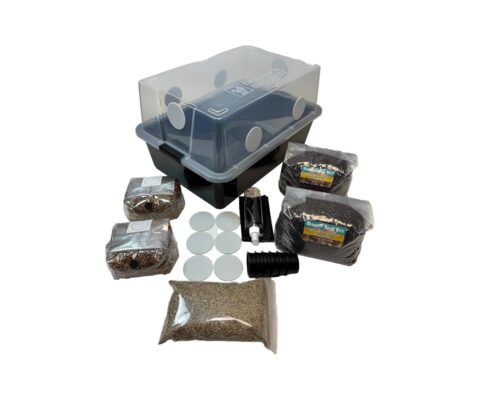
Be the first to review “Magic Mushroom Substrate Kit Large 1200 ml” Cancel reply
Related products
Magic - Magic mushroom growing kits
Grow Kits Mondo
Grow Kits Mondo
Grow Kits Mondo
Grow Kits FreshMushrooms®
Magic - Magic mushroom growing kits
Grow Kits without Mycelium
Grow Kits Mondo

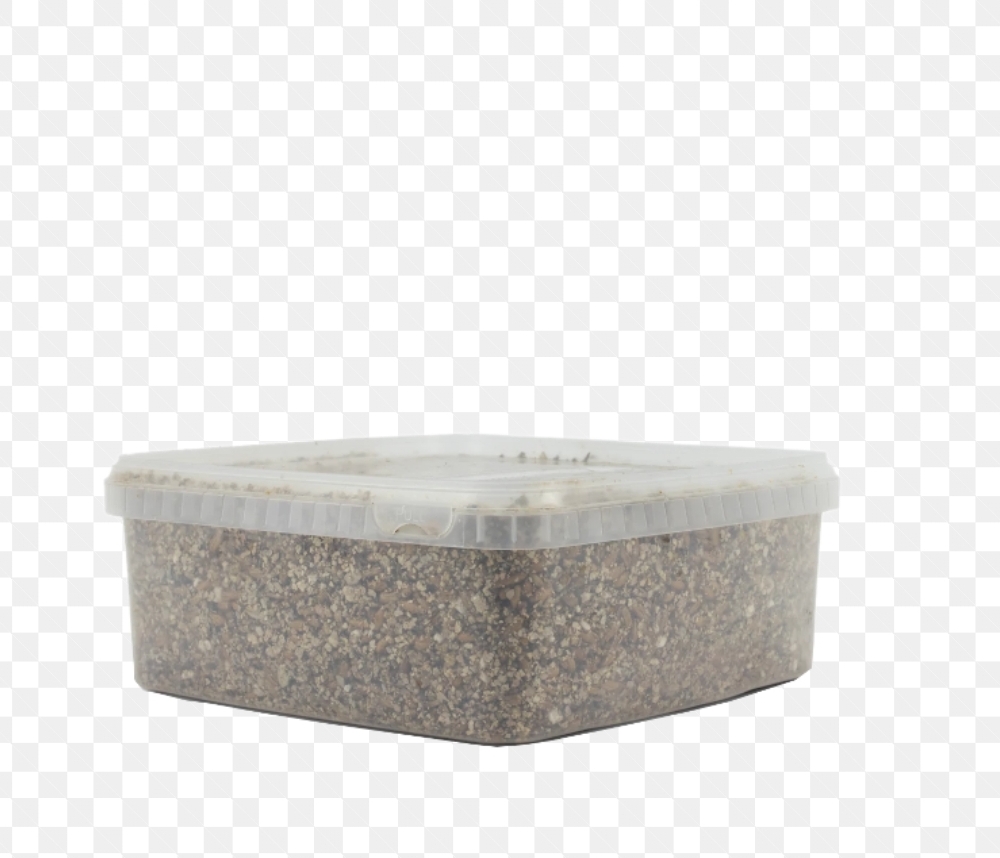
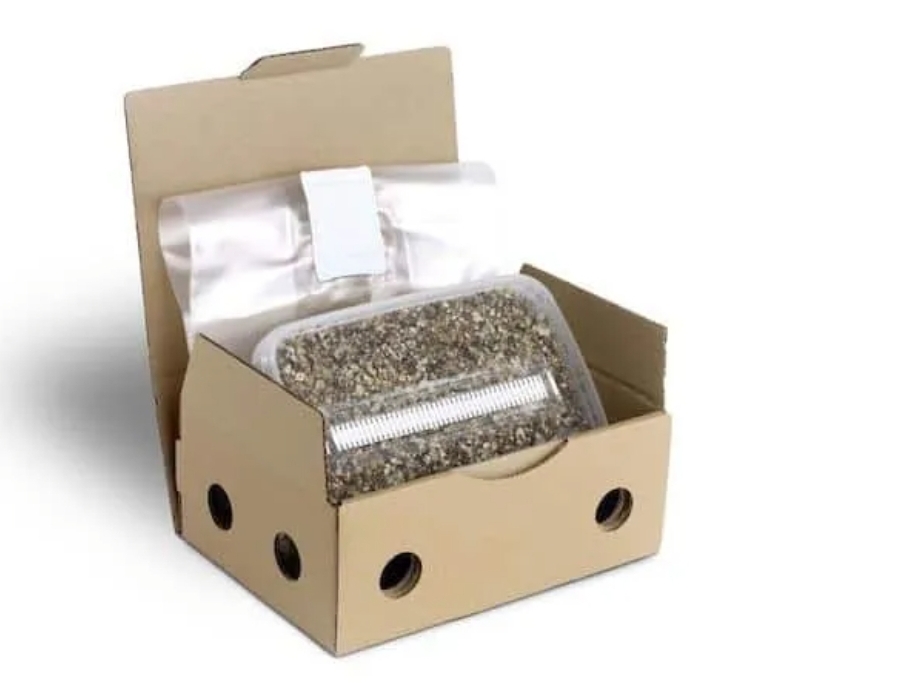

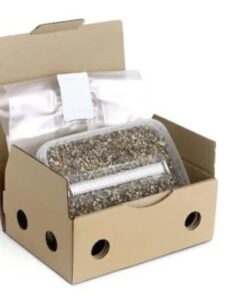




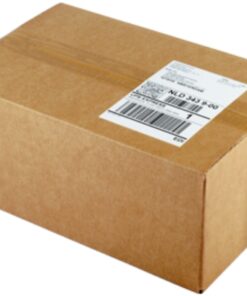


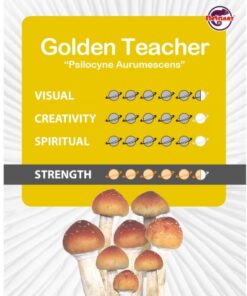



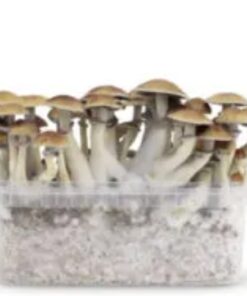



Reviews
There are no reviews yet.